Related Research Articles
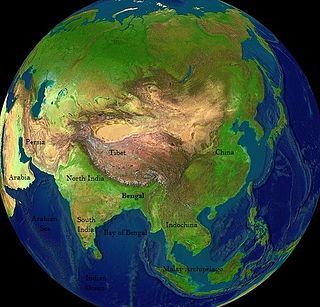
Bengal is a historical geographical, ethnolinguistic and cultural term referring to a region in the eastern part of the Indian subcontinent at the apex of the Bay of Bengal. The region of Bengal proper is divided between modern-day Bangladesh and the Indian state of West Bengal. The Indian states of Assam and Tripura have a sizeable Bengali population. A large Bengali diaspora exists across the world. Bengali is the sixth-most spoken language in the world.

Bankim Chandra Chattopadhyay CIE was an Indian novelist, poet, essayist and journalist. He was the author of the 1882 Bengali language novel Anandamath, which is one of the landmarks of modern Bengali and Indian literature. He was the composer of Vande Mataram, written in highly sanskritized Bengali, personifying Bengal as a mother goddess and inspiring activists during the Indian Independence Movement. Chattopadhayay wrote fourteen novels and many serious, serio-comic, satirical, scientific and critical treatises in Bengali. He is known as Sahitya Samrat in Bengali.

Sarat Chandra Chattopadhyay, was a Bengali novelist and short story writer of the early 20th century. He generally wrote about the lives of Bengali family and socity in cities and villages. However, his keen powers of observation, great sympathy for fellow human beings, a deep understanding of human psychology, an easy and natural writing style, and freedom from political biases and social prejudices enable his writing to transcend barriers and appeal to all Indians. He remains the most popular, translated, and adapted Indian author of all time.
Bengali Brahmos are those who adhere to Brahmoism, the philosophy of Brahmo Samaj which was founded by Raja Rammohan Roy. A recent publication describes the disproportionate influence of Brahmos on India's development post-19th Century as unparalleled in recent times.

Boro, also rendered Bodo, is a Sino-Tibetan language spoken primarily by the Boros of Northeast India and the neighboring nations of Nepal and Bangladesh. It is an official language of the Indian state of Assam, predominantly spoken in the Bodoland Territorial Region. It is also one of the twenty-two languages listed in the Eighth Schedule of the Constitution of India. Since 1975 the language has been written using the Devanagari script. It was formerly written using Latin and Eastern-Nagari scripts. Some scholars have suggested that the language used to have its own now lost script known as Deodhai.

Annada Shankar Ray was an Indian poet and essayist in Bengali. He also wrote some Odia poetry.

Bodo–Kacharis is a name used by anthropologist and linguists to define a collection of ethnic groups living predominantly in the Northeast Indian states of Assam, Tripura, and Meghalaya. These peoples are speakers of either Bodo–Garo languages or Assamese. Some Tibeto-Burman speakers who live closely in and around the Brahmaputra valley, such as the Mising people and Karbi people, are not considered Bodo–Kachari. Many of these peoples have formed early states in the late Medieval era of Indian history and came under varying degrees of Sanskritisation.
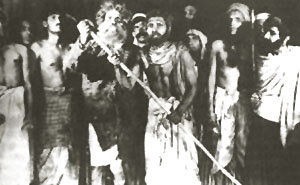
Bengali theatre primarily refers to theatre performed in the Bengali language. Bengali theatre is produced mainly in West Bengal, and in Bangladesh. The term may also refer to some Hindi theatres which are accepted by the Bengali people.

Eastern Bengal and Assam was a province of India between 1905 and 1912. Headquartered in the city of Dacca, it covered territories in what are now Bangladesh, Northeast India and Northern West Bengal.

The dialects of the Bengali language are part of the Eastern Indo-Aryan language group of the Indo-European language family widely spoken in the Bengal region of South Asia. The spoken dialects of Bengali are mutually intelligible with neighbouring dialects.

Gurusaday Dutt (1882–1941) was a civil servant, folklorist, and writer. He was the founder of the Bratachari Movement in the 1930s.
The Twipra Kingdom was one of the largest ancient - historical kingdoms of the Tripuri people in Northeast India.
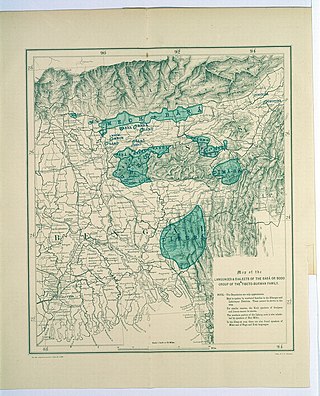
Kachari is a Sino-Tibetan language of the Boro-Garo subgroup, spoken in Assam, India. With fewer than 60,000 speakers recorded in 1997, and the Asam 2001 Census reporting a literacy rate of 81% the Kachari language is currently ranked as threatened. Kachari is closely related to surrounding languages, including Tiwa, Rābhā, Hajong, Kochi and Mechi.

John William Beames was a civil servant and author in British India. He served in the Punjab from March 1859 to late 1861, and in Bengal from December 1861 until the conclusion of his service in 1893. He was also a scholar of Indian history, literature and linguistics. His great work was a comparative grammar of Indo-Aryan languages, published in three volumes in 1872–1879. When he retired from the Indian Civil Service in March 1893, he had gained extensive knowledge of Indian life, and in 1896 wrote an account of his career, first published in 1961 as Memoirs of a Bengal Civilian.

Bangladeshi Folk Literature constitutes a considerable portion of Bengali literature. Though it was created by illiterate communities and passed down orally from one generation to another it tends to flourish Bengali literature. Individual folk literature became a collective product and assumes the traditions, emotions, thoughts and values of the community.
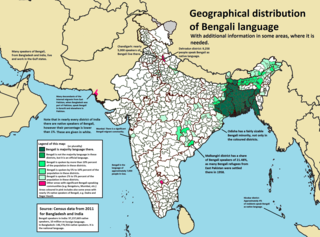
Bengali, generally known by its endonym Bangla, is an Indo-Aryan language native to the Bengal region of South Asia. With approximately 234 million native speakers and another 39 million as second language speakers as of 2017, Bengali is the sixth most spoken native language and the seventh most spoken language by the total number of speakers in the world. Bengali is the fifth most spoken Indo-European language.
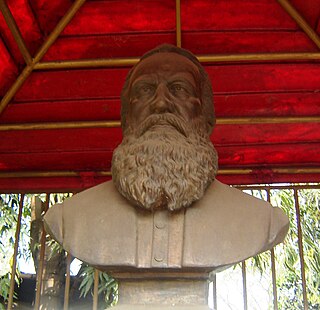
James Long (1814–1887) was an Anglo-Irish priest of the Anglican Church. A humanist, educator, evangelist, translator, essayist, philanthropist and a missionary to India, he resided in the city of Calcutta, India, from 1840 to 1872 as a member of the Church Missionary Society, leading the mission at Thakurpukur.
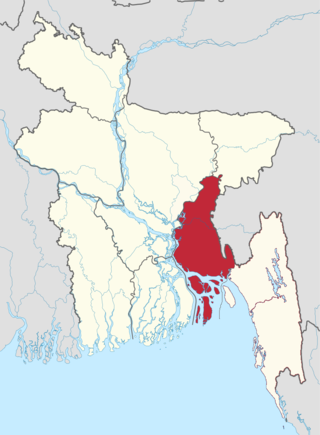
Meghna Division is a proposed administrative division within Bangladesh for the north-western parts of the existing Chittagong Division, comprising Brahmanbaria, Comilla, Chandpur, Noakhali, Feni, and Laxmipur Districts of Chittagong Division. The headquarter of the division is in Comilla. It covers the south-easternmost areas of the country, with a total area of 12,848.53 km2 (4,960.85 sq mi) and a population at the 2011 census of 16,708,000.

Satyendranath Tagore was an Indian civil servant, poet, composer, writer, social reformer and linguist from Calcutta, Bengal. He was the first Indian who became an Indian Civil Service officer in 1863 He was a member of Bramho Samaj.
Muhammad Hasanuzzaman was a Bengali educationist and politician. He served as a member of the Bengal Legislative Assembly.
References
- 1 2 Grierson, Sir George A. (1921). "OBITUARY NOTICE: James Drummond Anderson". JSTOR 25209710 . Retrieved 20 February 2023.
- 1 2 "James Drummond Anderson". Ancestry (U.K.). Retrieved 22 February 2023.
- ↑ Anderson, J. D. (1885). "A short list of words of the Hill Tippera language, with their English equivalents. Also of words of the language spoken by Lushais of the Sylhet frontier" . Retrieved 20 February 2023.
- ↑ Anderson, J. D. "A Collection of Kachári Folk-Tales and Rhymes". Project Gutenberg.
- ↑ Anderson, J. D. (2013). "The Peoples of India" . Retrieved 21 February 2023.
- ↑ Anderson, J. D. (1920). "A Manual of the Bengali Language". MIT Internet Archive. Retrieved 21 February 2023.
- ↑ Anderson, J. D. (1918). "Indira and other stories;". Hathi Trust Digital Library. Retrieved 22 February 2023.
- Crooke, William (ed), Obituary of Dr. J. Drummond Anderson, Folk-Lore, volume 31, p. 336